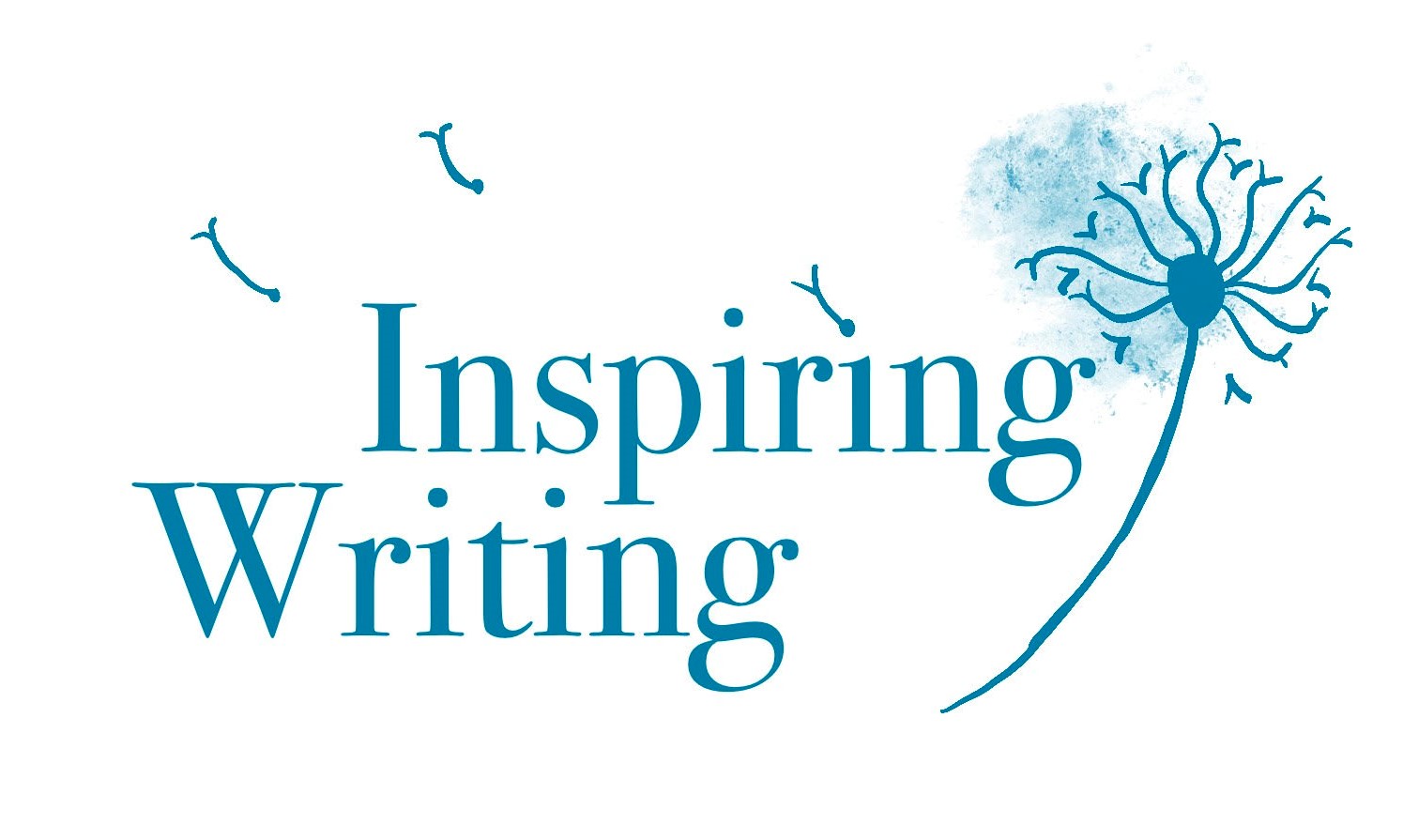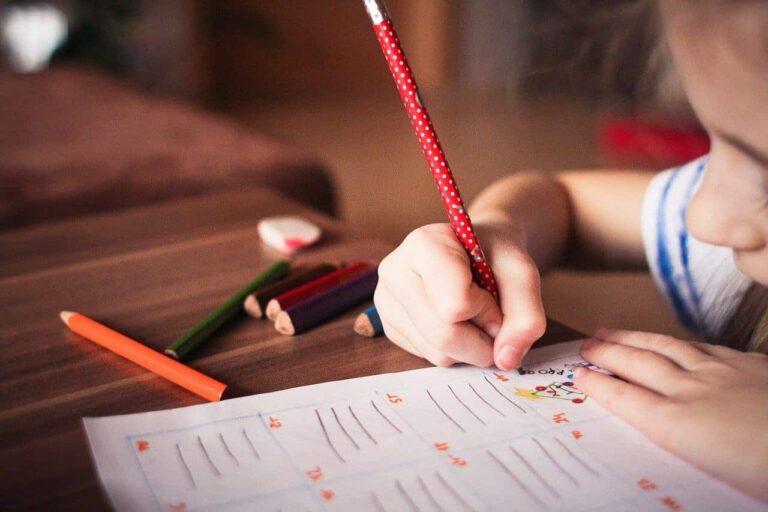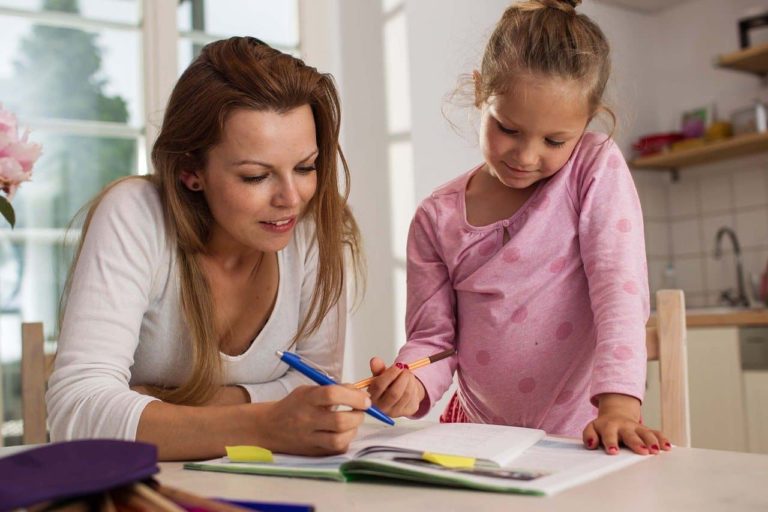7 Benefits of Reading Aloud With Children
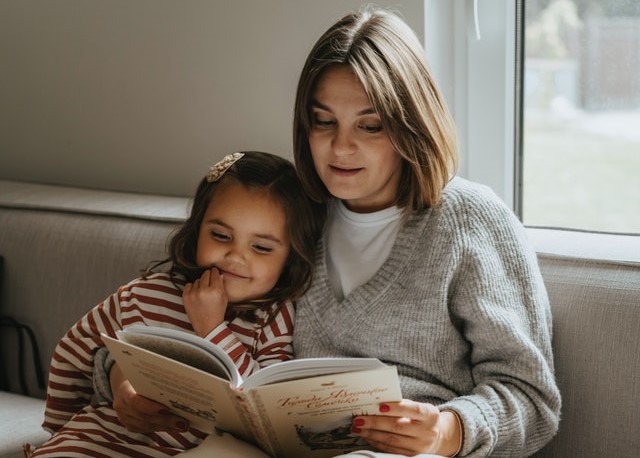
This post is part of the series 10 Ways to Inspire Your Budding Writer
Do you sometimes wonder if you are spending too much time reading aloud to your children when you could be investing in other things? Or maybe you need some encouragement to spend more time reading aloud. Here is your permission slip: 7 benefits that reading aloud to children has on our children’s minds and hearts:
1) Reading Aloud Provides a Storehouse of Treasures
As children’s writer Bill Martin Jr noted, “when we read great literature to children we are filling the storehouse.” I love the idea of giving our children a storehouse of treasures. They can draw from this treasure trove for their own pleasure but also delve into it when writing. So what kind of riches are we actually giving them?
Author Ralph Fletcher describes some of these treasures in his book, Making Non-Fiction From Scratch: “Reading to children allows them to soak up unmeasurable richness – plot possibilities, detail, story structures, language play, mood, character types, vocabulary, and expectation of pleasure, a sense of tension/resolution – all the important tools they’ll need to grow into strong readers. But reading to students also nourishes them as writers’.”
He adds, “the writing can only be as strong as the literature that surrounds and supports and buoys it up.” The language patterns we expose our children to often pop out in our children’s oral language before we notice them in their writing.
We laughed when a chant from one of our favourite picture books, Tacky the Penguin, showed up at bath time. Holding up a bath toy with a flourish, our young daughter announced, “We’ll sell it for a dollar and get rich, rich, rich!” Delighting in language. she displayed her early appreciation of cadence, rhythm and repetition.
2) Reading Aloud Builds Strong Bonds and Connections
Sitting outside, sun warm on our backs, each of my children cuddled a baby bunny while I read The Golden Goblet. Reading to my children ranks among the greatest joys in my homeschool journey. Entering the enchanting world of books together built a bank of shared story memories and drew us close.
Some of our best moments of connection and discussion grew out of our “read aloud” times, even if occasionally the kids had to nudge me to wake me up! True confession! Fellow tired mamas, be assured that those embarrassing moments just became part of our shared memories.
Now that my children are adults, we still refer to books we enjoyed together. Someone will chime into a discussion with a quote or recall a character or story relevant to a situation we are facing. At the end of my homeschooling journey, when I was culling books from my home library, my kids insisted on me keeping favorites which felt like old friends.
3) Reading Aloud Builds a Language Database
More reassurance about reading aloud comes from Andrew Pudewa from the Institute for Excellence in Writing. He states that being read to in large quantities during childhood is the number one predictor of good writing skills in adulthood. He notes that it builds a language database of good vocabulary, correct syntax, and an essential understanding of one’s native language.
Reading aloud introduces young children to the language of books, which tends to be more descriptive than our day-to-day speech and often uses more formal grammatical structures. Cozy time reading together gently welcomes our children into this world of more sophisticated language.
I recall when one of my daughters was about three, we were reading a non-fiction book about dental hygiene. After her dad helped her brush her teeth, she bounced up to me and announced, “Mummy, I got all the plaque off!” Though we hadn’t explicitly taught this word, she had internalized the vocabulary and applied it.
After my friend read the original Robin Hood story to her children, her 12-year-old daughter wrote a retelling. She included sentences like, “Robin said to the forester, ‘I am sure that I can cause the best hart among those deer yonder to die,’ and ‘Begone, before I hurry you along.’’’ Listening and narrating enabled this budding writer to internalize the vocabulary and style of the original.
4) Reading Aloud Covers a Wide Range of Content in an Engaging Way
As we read from a variety of genres and styles, we help our children become comfortable with a range of texts and the different vocabulary and formats they use. In our family we usually had an engaging fiction read-aloud on the go and often linked it with a nonfiction topic of study. For example, alongside history books about Ancient Egypt, we would read a fun historical novel like The Golden Goblet, filling our senses with the sights, smells and tastes of the time.
Biographies of famous people fit well with topics in science, history, music, and art. Poetry tea-times are a wonderful way to introduce poetry while building strong family bonds. If you are looking for recommendations, Read Aloud Revival provides some helpful book lists on different content topics as does IEW.
5) Reading Aloud Models Strategies and Promotes Critical Thinking
But, you might ask, what about our children who can already read for themselves? Is reading aloud still worth the time investment? Yes! The value of reading aloud has an impact far beyond introducing books to our preschoolers and beginning readers.
Andrew Pudewa recommends reading aloud long after our children can read independently. He points out that independent readers miss things and skip difficult words or phrases. When we read aloud, we can pause sometimes to explain an allusion or discuss a point, fill in some gaps, or clarify vocabulary. Plus we can use our voices to communicate the mood.
As Ralph Fletcher describes it – “We make our thinking visible.” As we do that, we model habits and strategies used by strong readers. These habits can spill over into writing as well, especially if we talk about what makes the writing strong.
Asking open-ended questions, like “Why do you think the character did that?” or “What does this character or story remind you of?” can hone analytical skills and deepen comprehension.
I love Ralph’s comment in his book, Making Non-Fiction From Scratch: “a read-aloud creates an elegant yet almost invisible scaffolding, a rich opportunity for you to hold hands with your students, assisting them as they venture into more difficult subject matter”
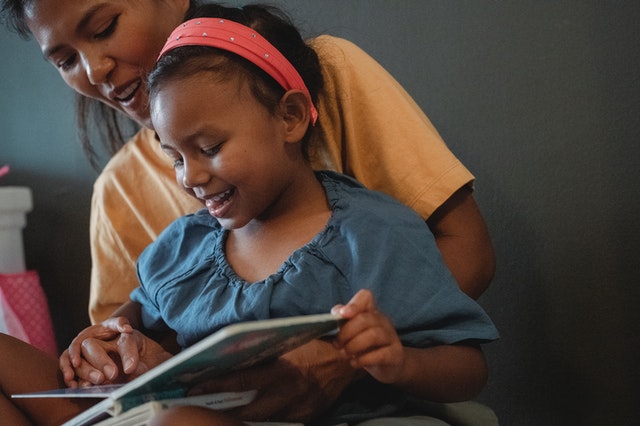
6) Reading Aloud Instills a Love of Reading
Jim Trelease, author of The Read-Aloud Handbook holds that “every time we read to a child, we’re sending a ‘pleasure’ message to the child’s brain…You could even call it a commercial, conditioning the child to associate books and print with pleasure.” What a great excuse to read often to our children! Especially when we remember that this pleasurable experience also builds a storehouse of words they can draw from in their writing.
I’m delighted that all six of our children have morphed into avid readers, and we take joy in recommending books to one another.
7) Reading Aloud Builds Empathy
Stories allow children to walk in others’ shoes. As they hear of and connect with various characters’ difficulties, dreams, joys, and fears, they learn about different emotions and cultivate compassion and sensitivity.
As Kasey Short, the head of a 6th grade English department says, “Reading allows us to experience other worlds and situations. Reading has the power to open hearts and humanize those who are often dehumanized. Reading the stories of others can help us to better understand and reflect on our own stories.”
One powerful example of this is Thank You, Mr. Falker, by Patricia Polacco, which shares the author’s own story of being demoralized and bullied because of her difficulty in learning to read. As Patricia paints a vivid picture of her experience, children can begin to understand how that might feel, and can rejoice with her when a wise and compassionate teacher intervenes.
Children’s author Anna Dewdney sums up this idea: “Empathy is as important as literacy. When we read with a child, we are doing so much more than teaching him to read or instilling in her a love of language. We are doing something that I believe is just as powerful, and it is something that we are losing as a culture: by reading with a child, we are teaching that child to be human.”

Conclusion:
In my heart I always felt that reading aloud was a great educational investment. Hearing educators affirm this reassured me. Reading together built memories and emotional bonds with my children while also investing in them as readers and writers. I could relax about the many hours we spent devouring books together—no more guilt that we should be doing something more ‘academic’.
Sarah Mackenzie from Read Aloud Revival sums it up beautifully: “Reading aloud is a parenting power move. There’s no single better way to set our kids up for academic success while also forming warm, rich relationships with them, and helping them grow in both empathy and fortitude.”
So as you snuggle on the couch with your children, favorite book in hand, go ahead and give in to their pleas for “just one more chapter.” Not only are you building great memories, but you are also laying the foundation for a lifetime of enjoyable reading and writing.
